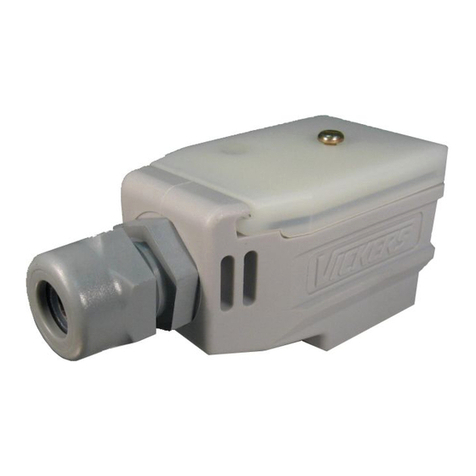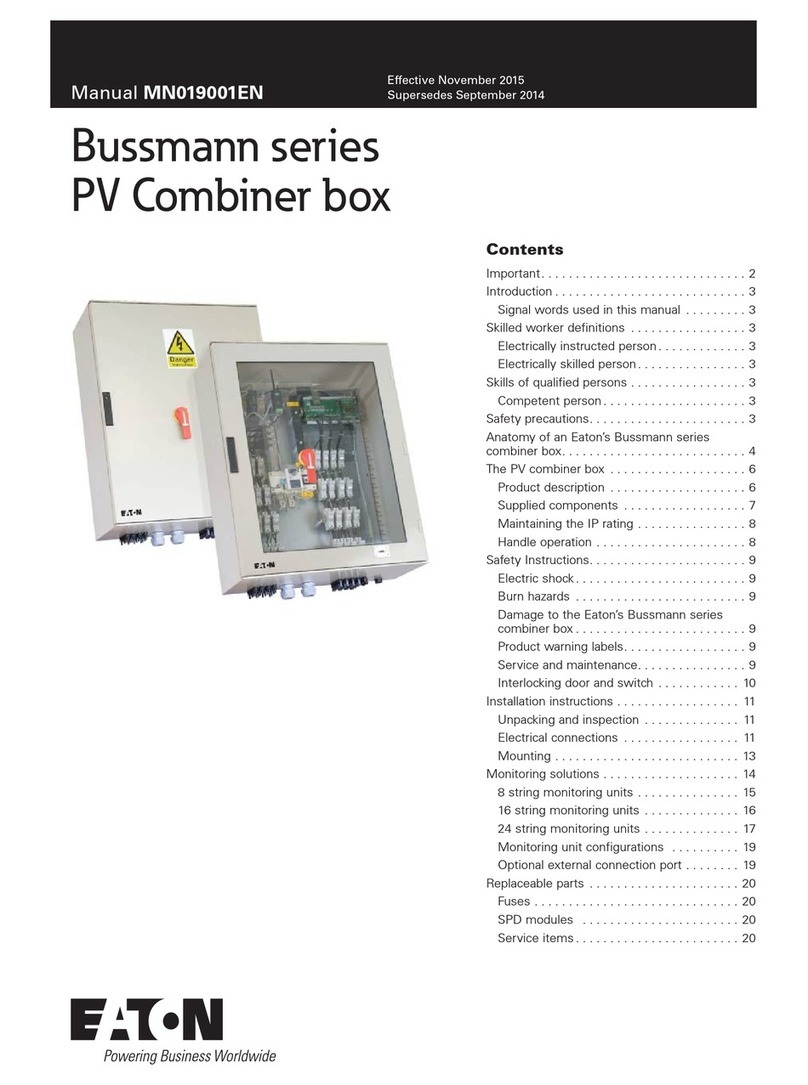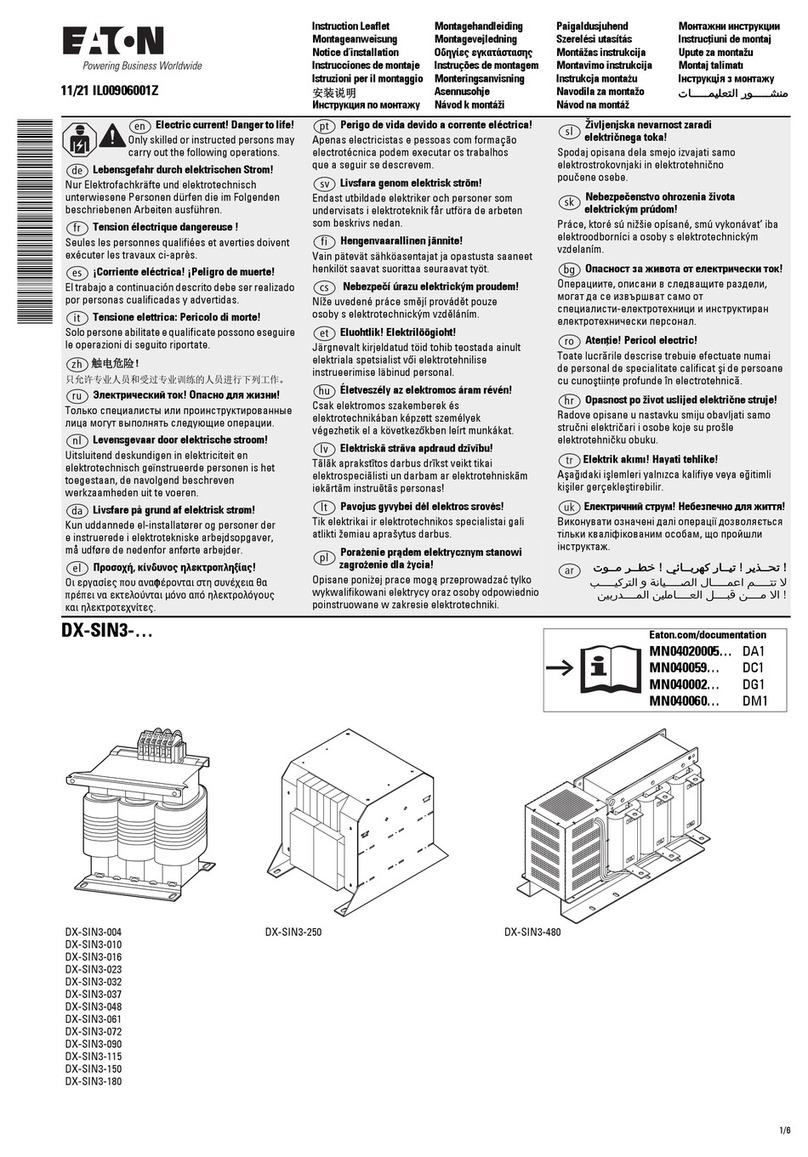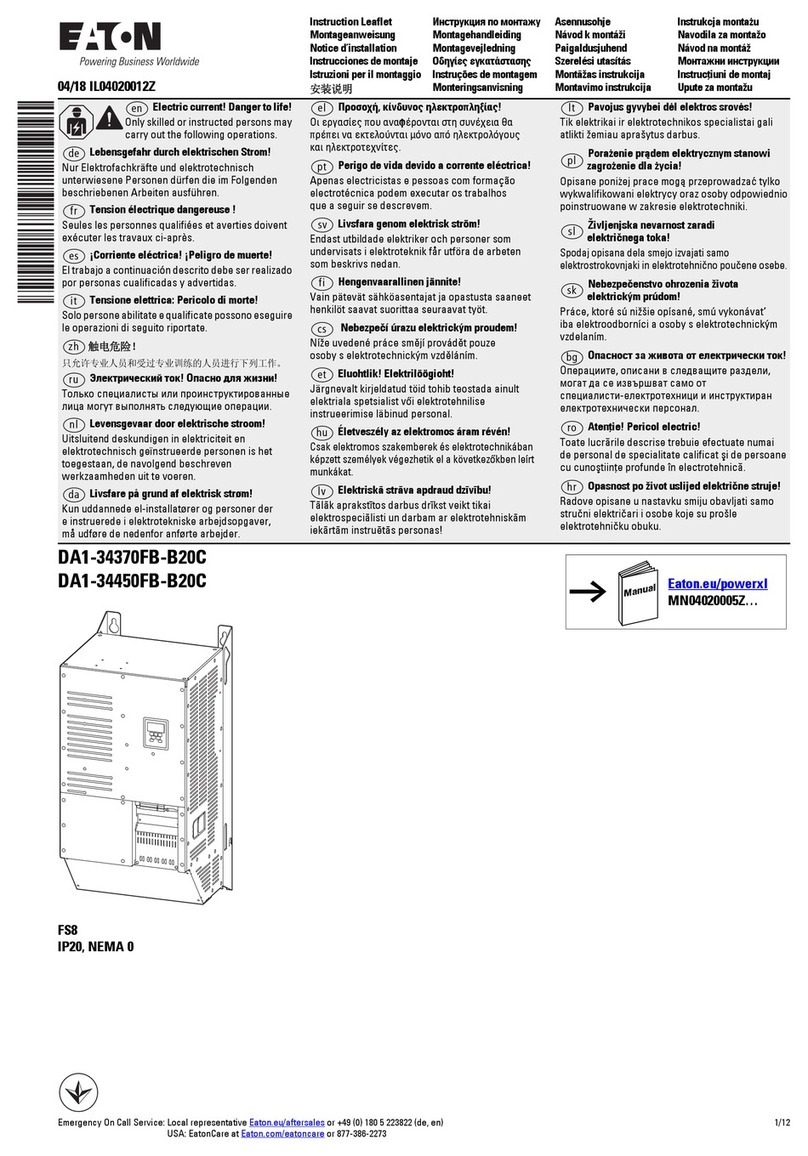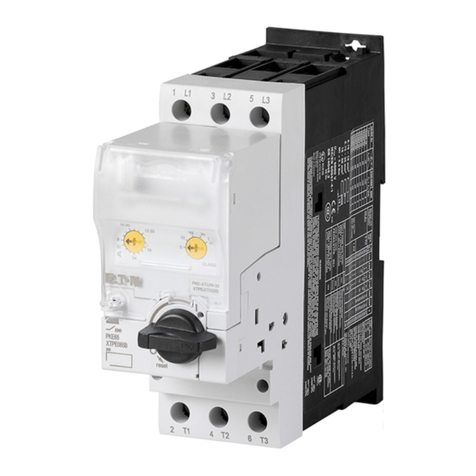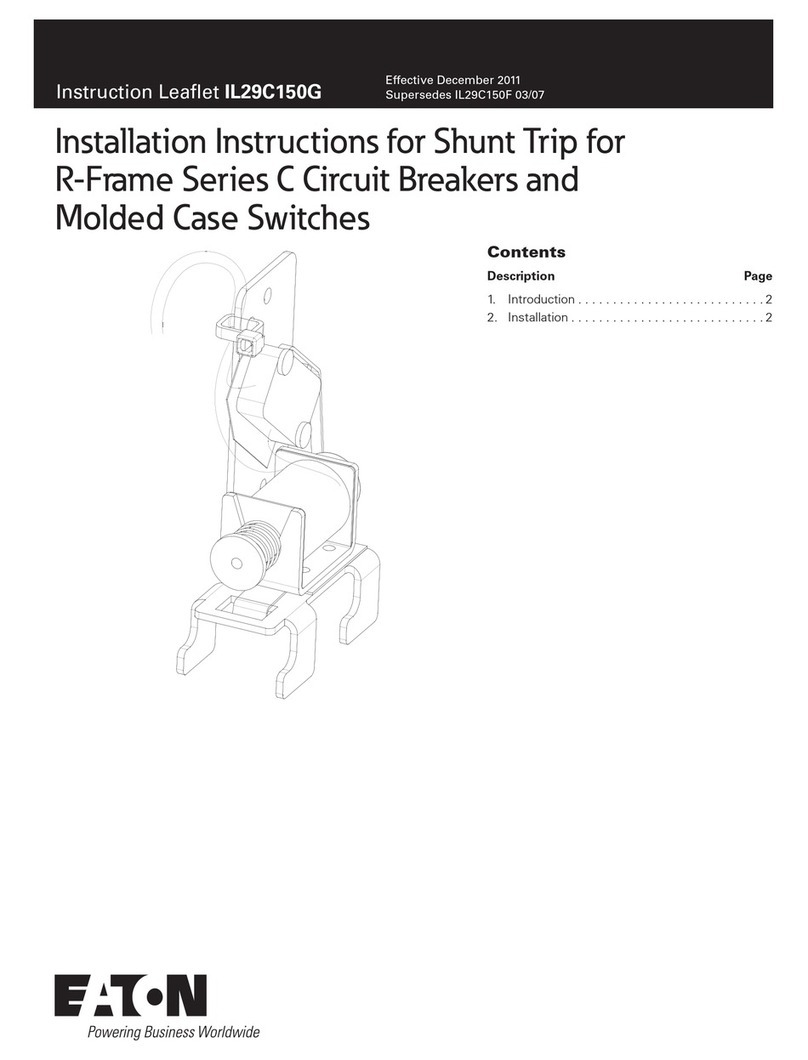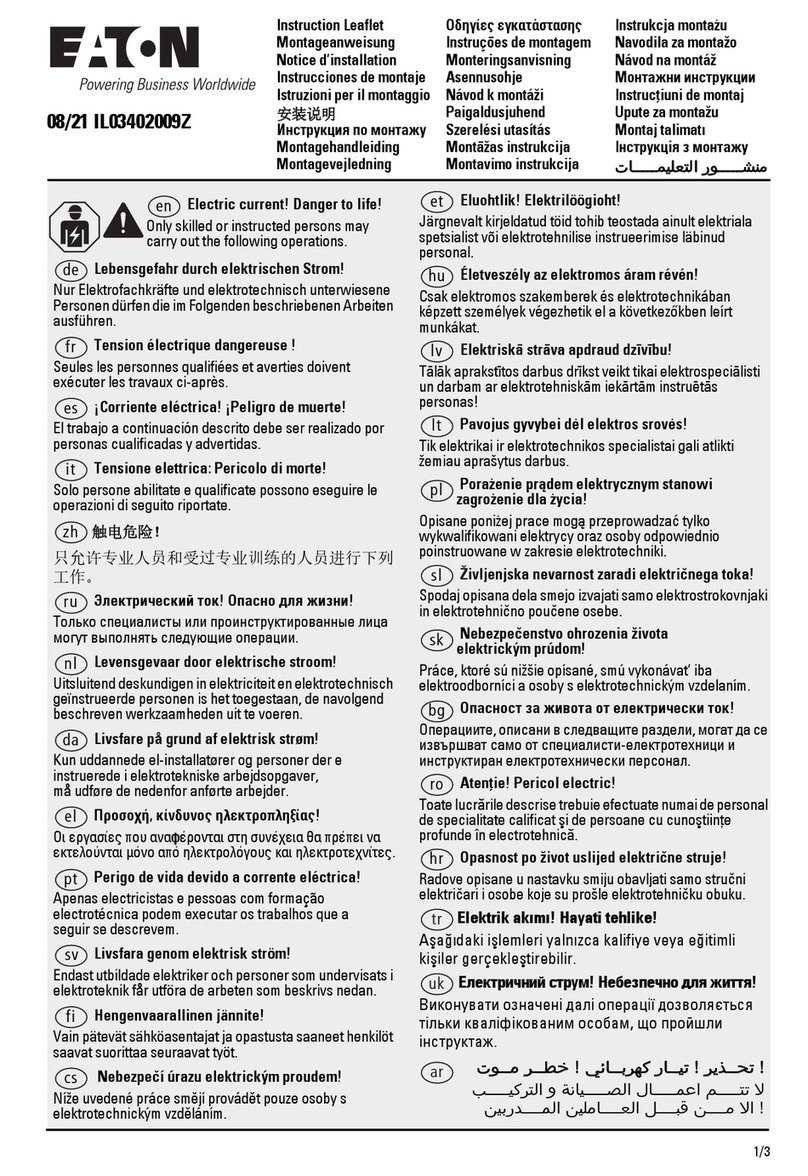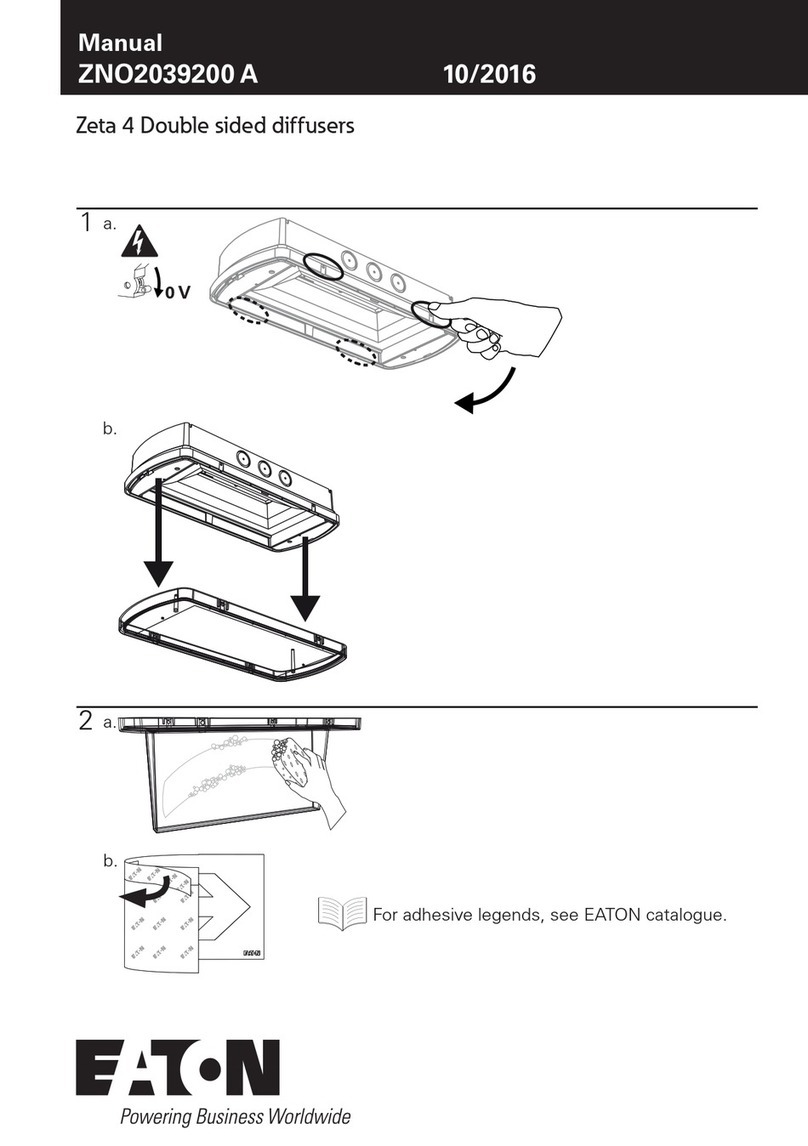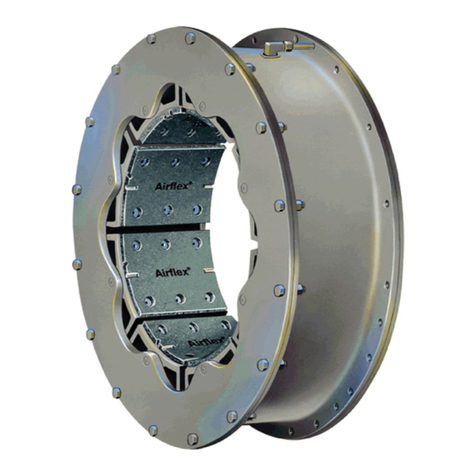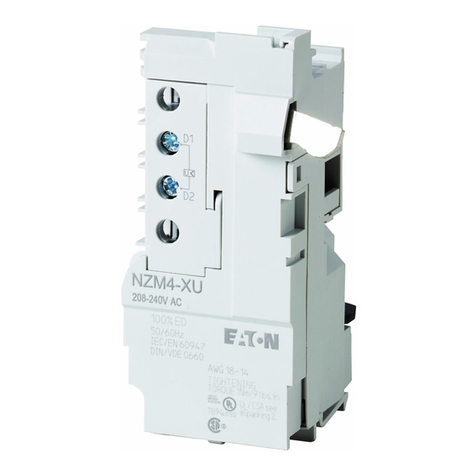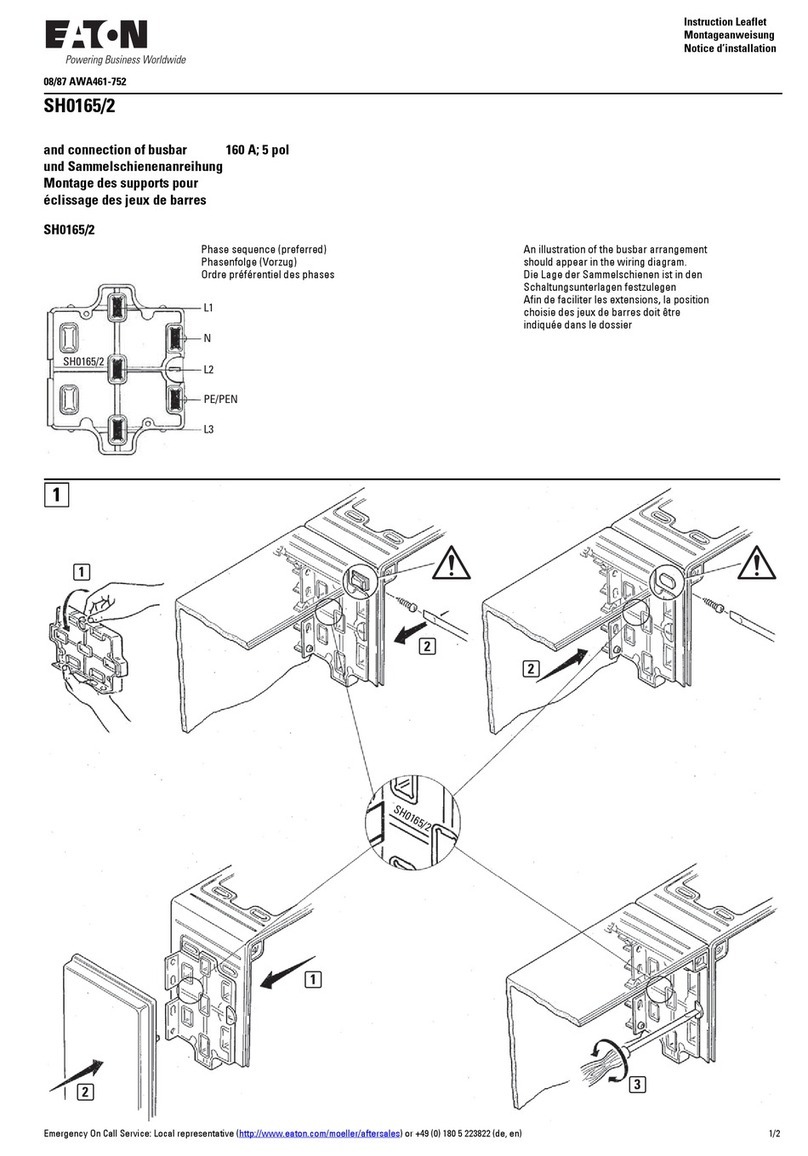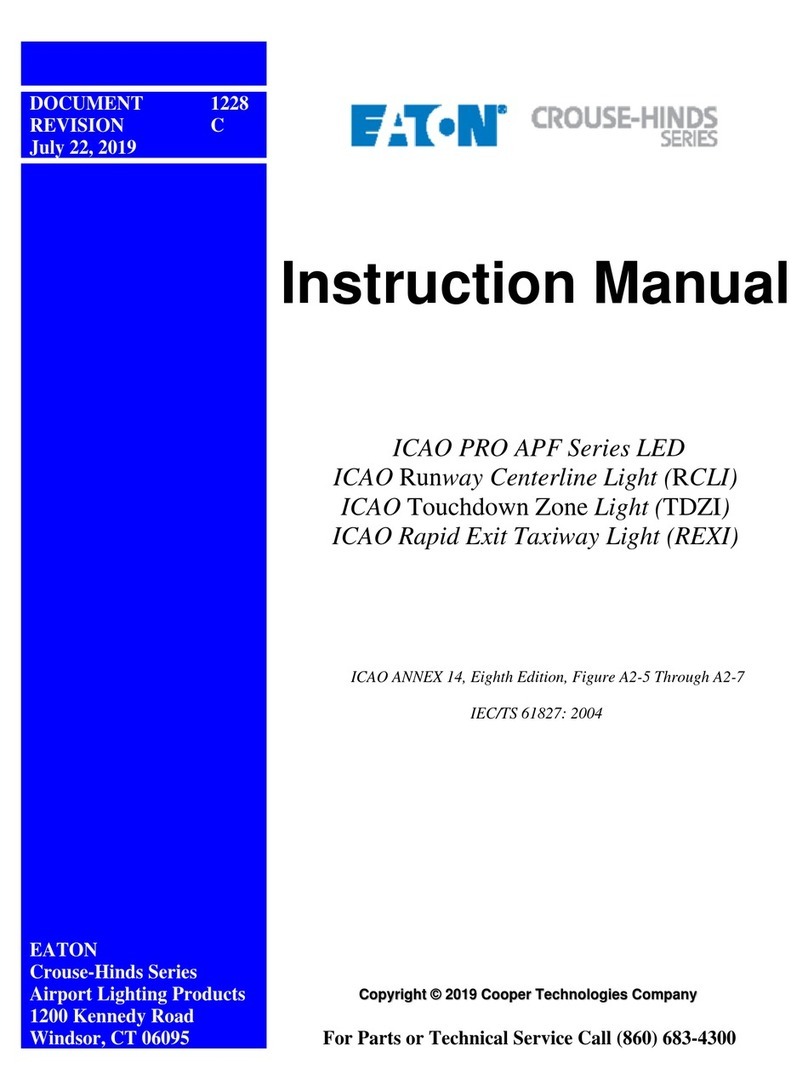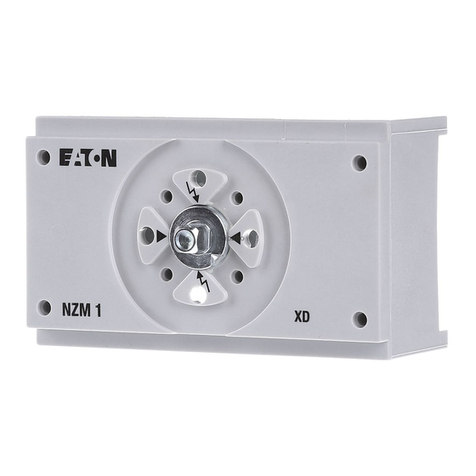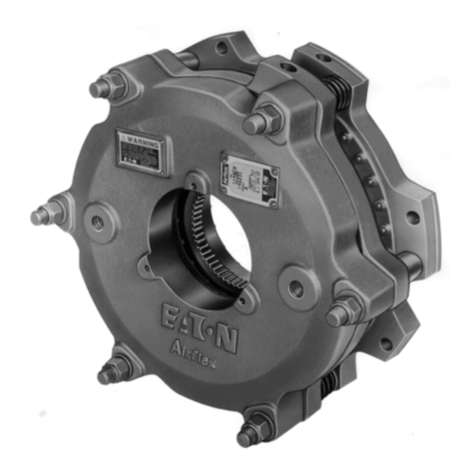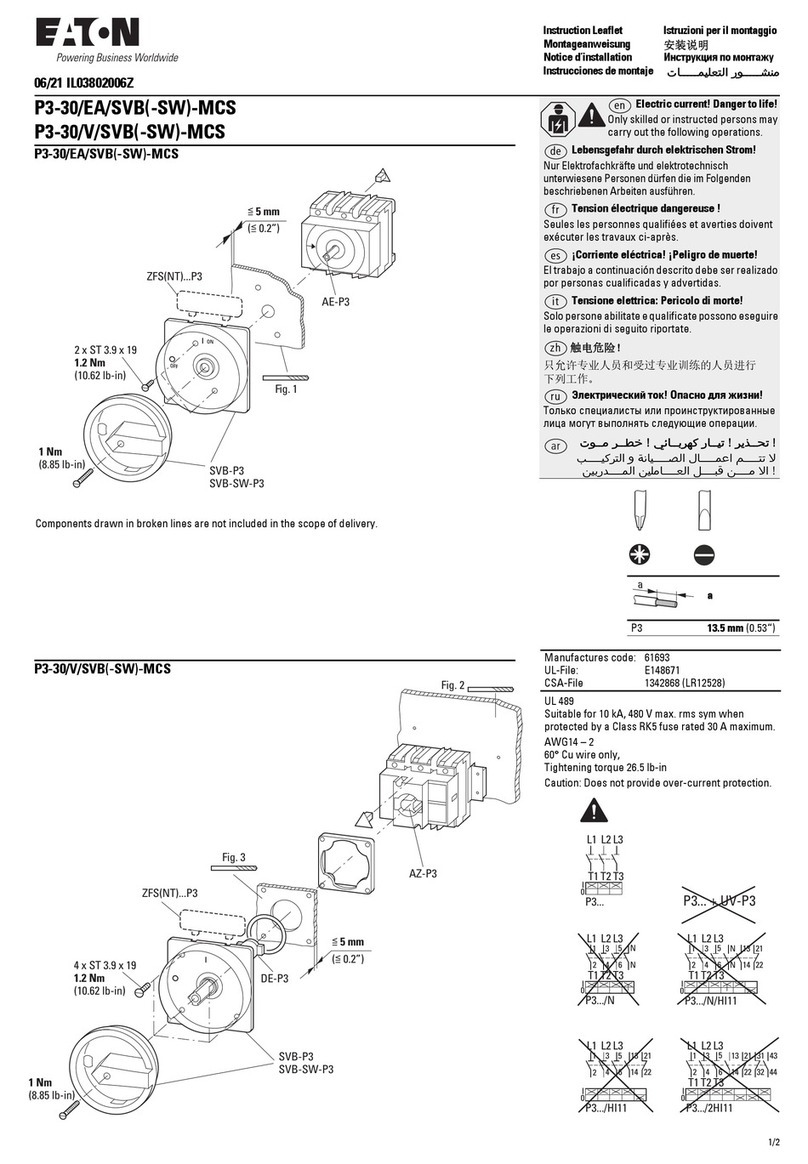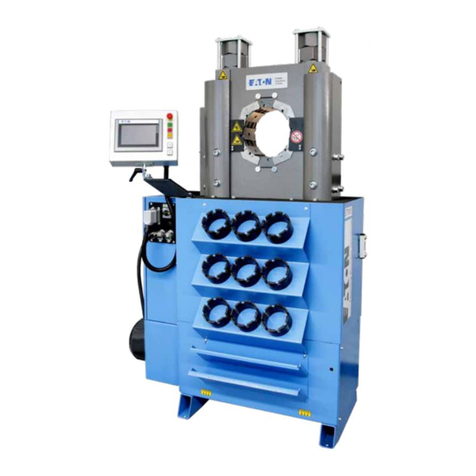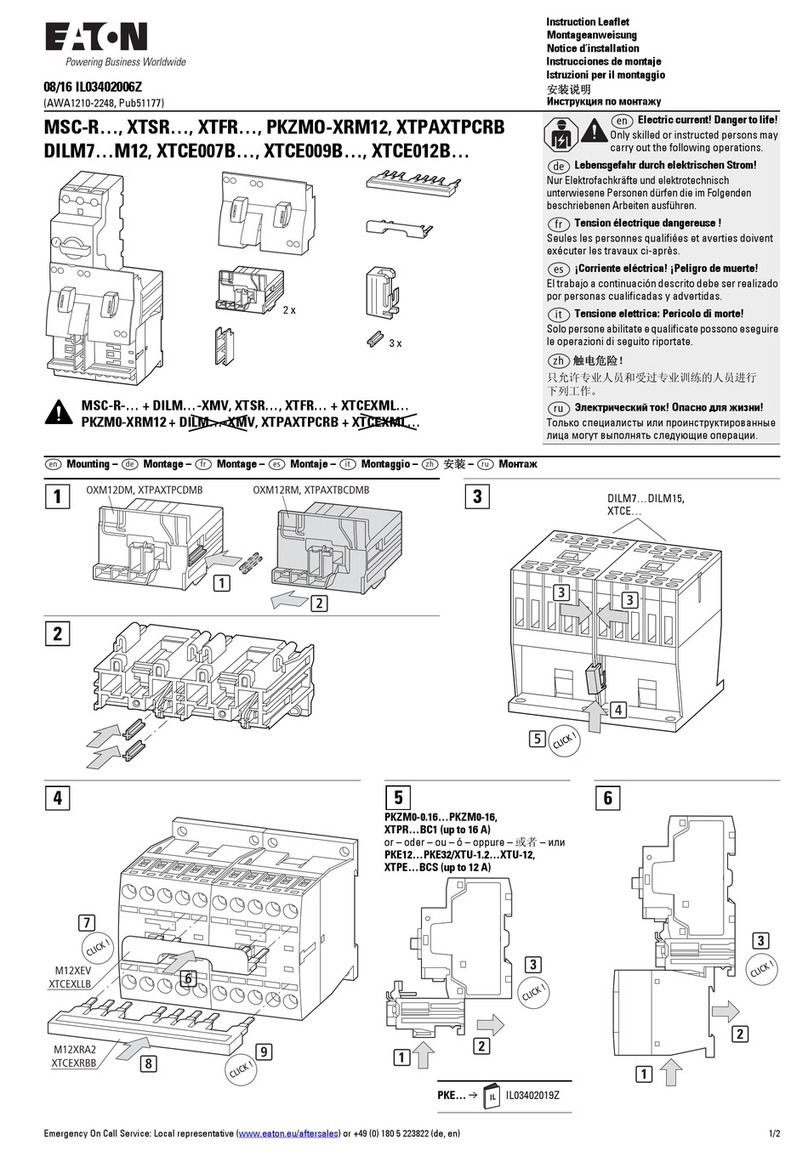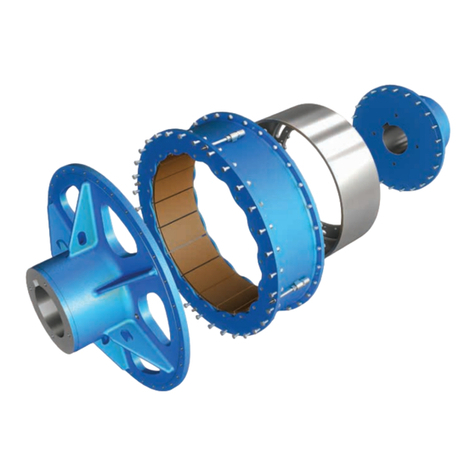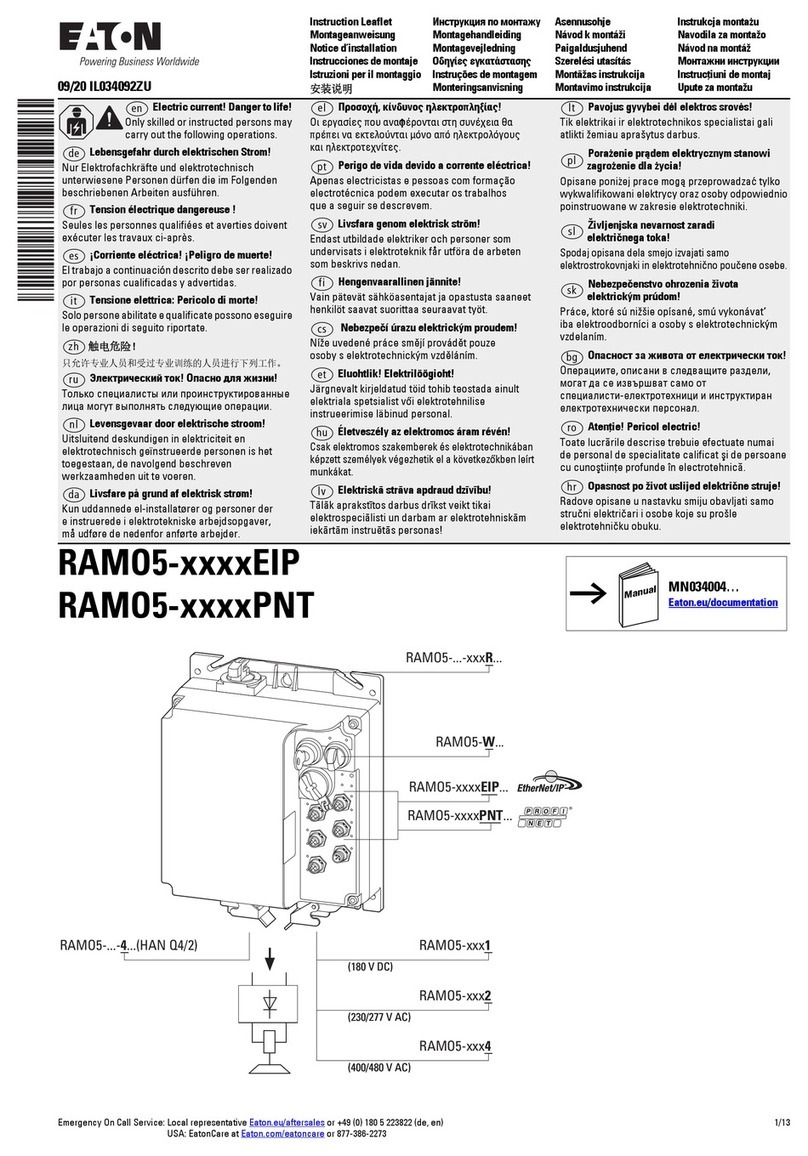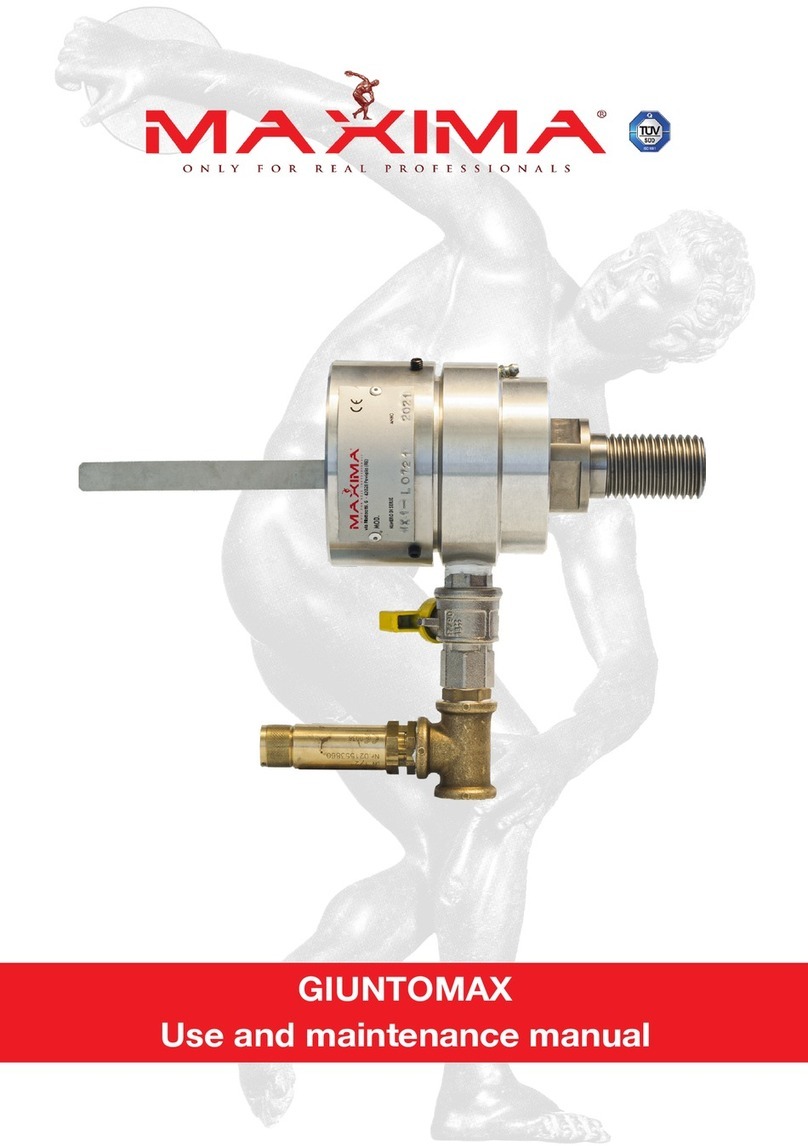
4
Instruction Booklet IB32267ARC
Effective December 2010
VacClad-W 38 kV arc-resistant
switchgear indoor housings
EATON CORPORATION www.eaton.com
Section 2: Installing indoor switchgear
2.1 Outline of installation procedure
1. Prepare the installation foundation. It is recommended that floor
channels be embedded in the foundation to maintain a level surface.
2. At the factory, the switchgear lineup may have been divided
into groups to facilitate shipping. At the installation site, the
groups must be rejoined to form the switchgear lineup. Align
the groups, side-by-side, using the tie-bolt holes.
3. Bolt the groups together through the tie bolt holes.
4. Bolt or weld the base members of the vertical section frame,
front and rear, to the foundation channels.
5. Remove all shipping braces.
6. Connect the ground bus.
7. Connect the high voltage bus between the shipping group.
8. Connect the control wires.
9. Replace the metal barriers in the bus compartments.
10. Connect the main power cables and fully insulate the terminals
for the voltage class (see section on storage of equipment).
11. Replace the rear covers on all the vertical sections.
12. All 38 kV arc-resistant switchgear assemblies require an arc skirt
assembly to be installed above the roof of the switchgear for arc
expulsion containment.
13. Check the operation of the levering-in system in the breaker
compartments.
14. Check the potential transformers and the control power
transformers in the auxiliary compartments.
15. Perform loading check on both control and primary circuits to
ensure that the system is ready for operation.
2.2 Details of the installation
1. Prepare the foundation.
Review the floor plan drawings supplied for the order and the
following instructions carefully.
a. The minimum recommended clearances at the front, rear,
and sides of the switchgear are shown in Figure 2. Locate
the foundation so there is adequate space at the front, rear,
and sides of the switchgear lineup. Leave at least 6.6 feet
(2m) of unobstructed space above the roof of the switchgear
for arc expulsion. When applicable, an arc skirt is installed
within this space. No electrical equipment should be located
above the switchgear without proper protection suitable to
withstand arc expulsion.
b. Make sure that the foundation is flat, level, and in true plane.
c. Design the foundation so it will be strong enough to support
the weight of the switchgear without sagging. Table 1 gives
the weights of the various ratings of switchgear and breakers.
Be sure to take into account the shock or impact weight
that occurs when the breaker trips and when it closes.
The impact weight is 1.5 times the weight of the breaker.
The weights in the tables are only an approximation. The
actual weight will vary, depending on the type and the
amount of equipment in the switchgear. Use adequate
safety factors.
d. The recommended foundation consists of steel channels
embedded in a level concrete floor. The channels must lie in
a flat and level plane. A slope of 0.125 inch (3.175 mm) in 3
feet (0.9m) in any direction is acceptable. In no case may the
non-supporting areas of the foundation be higher than the
tops of the steel channels.
The anchor bolts, channels, and other materials are to
be furnished by the purchaser of the switchgear. A
4.00-inch (101.6 mm) structural channel is recommended
as the minimum size for the average indoor switchgear system
If unit substation transformers or high voltage switches
are part of the installation, be sure that the floor steel
under the transformer conforms to the specifications of
their manufacturers.
e. Install the conduits in the foundation.
When the primary and secondary cables enter the switchgear
from below, the conduits that carry them are embedded in
the foundation. A floor plan drawing is furnished with each
order. Use this drawing to determine the conduit locations.
Avoid circling of steel around single-phase cables rated 600A
or more to prevent overheating due to induced currents.

